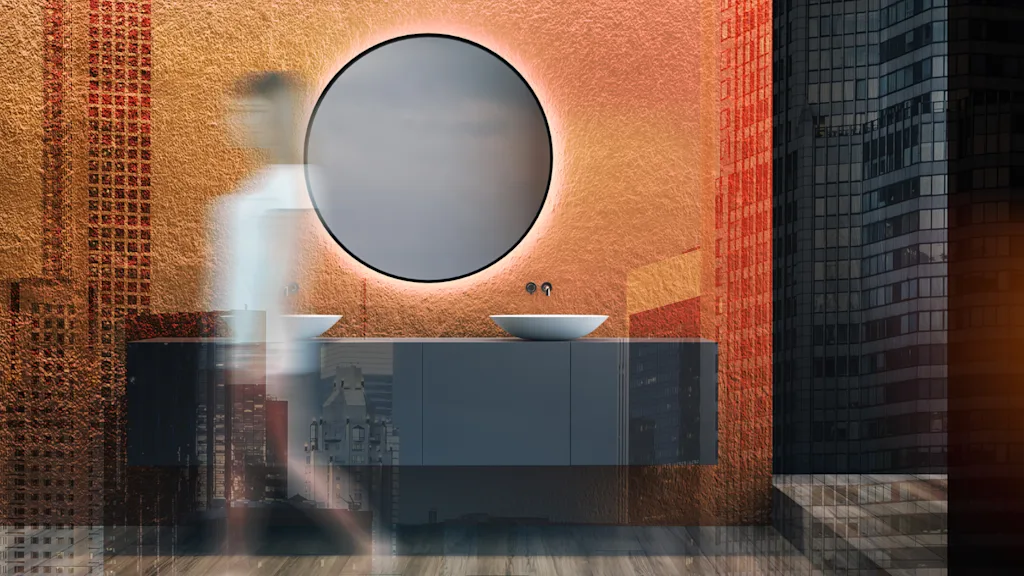
When most people hear the word luxury, they think of exclusivity: high-end materials, bespoke finishes, and designs tailored for the few. But a quiet revolution is underway. The true measure of luxury today is accessibility: designing environments that are beautiful, functional, safe, and empowering for every body. Nowhere is this more urgent, or more overlooked, than in the bathroom.
According to the CDC, the bathroom is the most dangerous room in the house. There are 234,000 annual bathroom-related injuries in the U.S, with 81% caused by falls. For older adults, those falls can trigger a cascade of consequences: loss of independence, costly healthcare expenses, and a diminished quality of life. And yet, despite the bathroom being one of the most hazardous rooms in the home, its design has long been guided by aesthetics alone or, at the opposite extreme, clunky, clinical looking “solutions” that compromise dignity.
At Michael Graves Design, we’ve sought to lead a paradigm shift proving that the future of luxury is accessibility. In our second collaboration with Pottery Barn, we’ve introduced a collection of accessible bathroom products: a vanity with integrated grab bar, a new “grab frame” inspired by garden trellises combining architectural elegance with versatile safety support, and discreet grab bars built into a towel bar and a toilet paper holder. The collection shows how safety and style can, and must, live side by side.
ACCESSIBLE LUXURY ACROSS LIFE’S FULL ARC
For decades, accessibility was treated as an afterthought, bolt-on products carrying the stigma of hospitals and institutions. This reinforced the false idea that you can either have a safe bathroom or a beautiful one, but not both.
Subscribe to the Daily newsletter.Fast Company’s trending stories delivered to you every day
Privacy Policy
|
Fast Company Newsletters
Our new collection challenges that assumption. A vanity can be refined, inviting, and intuitive while also being easy to navigate with limited mobility. A grab frame can be an interior design feature as much as a safety tool. Grab bars integrated into everyday accessories can blend seamlessly with surrounding materials, enhancing the overall space rather than detracting from it.
But bathrooms aren’t only sites of risk; they are deeply emotional spaces. They’re where we begin and end our days, where children learn independence, where parents find a moment of solitude, and where older adults maintain dignity and autonomy. Designing items for the bathroom means designing for life’s most intimate transitions.
That’s why we think about the bathroom as both a present day necessity and a long-term investment in lifespan design. More households today are multigenerational, blending the needs of children, parents, and grandparents under one roof. Aging-in-place is a growing aspiration with enormous market implications. And temporary conditions, from injury to pregnancy to recovery from surgery, remind us accessibility is a universal human experience.
The same toilet paper holder with integrated grab bar that provides peace of mind for an older adult may also serve a child learning to balance or a teenager recovering from an injury. The same vanity that feels luxurious to one person also offers essential reach, stability, and comfort to another. This is design as foresight: solutions that adapt gracefully to evolving household needs rather than forcing costly renovations later.
By reframing accessibility as an essential part of luxury, not a limitation on it, we elevate the daily rituals of bathing, grooming, and self-care into experiences that feel dignified and restorative for every member of the household. This product strategy extends beyond the bathroom, presenting opportunities to address the activities of daily living more broadly.
DESIGN AS ANTICIPATION
To that end, the lesson extends beyond bathrooms. Design, at its best, is a form of anticipation, a way of seeing around corners and preparing for the moments when people need support most. Accessibility is about creating resilient environments that hold up under real-life pressures.
advertisement
For businesses, this shift has profound implications. The companies that anticipate and meet the needs of diverse users will build deeper loyalty, longer product life cycles, and more durable brands. Those who continue to design for a “typical” user will miss opportunities hiding in plain sight.
5 LESSONS FOR EVERY ENTREPRENEUR
Not every business will design bathroom fixtures, but the principles that guide accessible luxury apply across industries. Here are five takeaways:
Redefine luxury through accessibility
The strongest brands of the future will be those that make people feel included and empowered.
Design for lifespan, not a snapshot
Products and services that adapt and anticipate customers’ evolving needs earn lasting loyalty.
Use constraints as creativity catalysts
Accessibility challenges often spark breakthroughs that benefit everyone.
Blend purpose with personality
People may buy for function, but they become brand loyalists when design delivers dignity, joy, and peace of mind.
Expand your perspective beyond the “average” user
There is no average customer; designing for edge cases often reveals universal value.
TOWARD A NEW STANDARD
We stand at a crossroads. Demographic shifts, cultural expectations, and personal experiences are reshaping how we define the modern home. For some, accessibility is already a necessity. For others, it is an inevitability. For all of us, it should be an expectation.
The bathroom may be one of the smallest rooms in the house, but it carries outsized importance in our health, independence, and dignity. By reimagining it through the lens of accessible luxury and lifespan design, we can transform not just a room, but the very idea of what it means to live well.
Luxury is no longer about gold-plated fixtures or marble countertops. Luxury is being able to live comfortably, safely, and beautifully, at every age, in every circumstance, for every body. That is the standard we should all be designing toward.
Ben Wintner is CEO of Michael Graves Design.